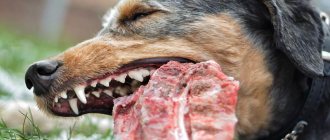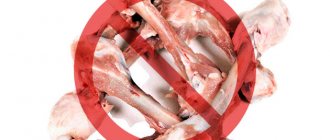Why dogs can't have chocolate
The human body is significantly different from the dog’s, and what is considered safe and beneficial for humans is completely contraindicated for dogs. It’s rare that any four-legged pet will refuse to treat themselves to a chocolate candy, and in some cases, more than one. Kind and loving owners, trying to please their four-legged friend, watch with emotion as their pet devolves a sweet treat on both cheeks. But after some time, the picture changes significantly: the beloved pet no longer looks contented and happy; on the contrary, the condition of the furry friend begins to deteriorate every minute.
The fact is that cocoa contains certain substances - methylxanthines, which are not absorbed by the dog's body. Caffeine and theobromine are present in any chocolate treat; dark and bitter chocolate are especially rich in these substances. In white and milk, their presence is minimal, but this does not mean that the pet can consume sweetness all the time. Methylxanthines have a cumulative effect, so if the animal regularly receives even one slice of milk or white treat, intoxication will still not be avoided.
The dangerous levels of theobromine and caffeine in various types of chocolate are as follows:
- Dark –7 grams per kg of animal weight;
- Dairy – 55.5 grams per kg of pet’s body weight;
- White – 25 grams per kg of pet’s weight.
Attention! The body of a faithful friend, unlike humans, does not contain special enzymes that can break down theobromine and caffeine, so chocolate poisoning in dogs is very common.
How much chocolate is dangerous for dogs?
Chocolate is highly toxic to dogs. Either a large portion of this sweet product eaten at one time or small amounts of chocolate that the dog takes regularly can be fatal. According to British veterinarians [1], the dangerous amount of theobromine for animals is 100-150 mg per 1 kg of weight
(for reference: for 1 gram of bitter dark chocolate there is from 5.5 to 16 mg of theobromine, and for 1 gram of milk chocolate - approximately 2.4 mg).
For a dog weighing 15 kg, the dangerous amount of theobromine is 1500-2250 mg, which is about 90 grams of dark chocolate with a high alkaloid content or more than 600 grams of milk chocolate
. Of course, no pet can handle this amount of chocolate at one time. But given that theobromine tends to accumulate in a dog’s body, regularly eating even small portions of chocolate can lead to severe poisoning.
Symptoms of dog poisoning from chocolate products
The symptoms of theobromine poisoning are similar to many intoxications with toxic substances. To understand the true cause of the illness and choose an effective treatment for chocolate poisoning in dogs, the owner must remember the last time the pet consumed sweets with cocoa beans. The following signs indicate theobromine poisoning:
- The animal becomes overly excited. Heartbeat and urination increase.
- There is a lack of coordination of movements, the four-legged friend suffers from convulsive conditions.
- Body temperature drops noticeably.
- The animal is breathing frequently and heavily.
- Hypotension develops.
Info! It should be remembered that chocolate is poison for dogs, often leading to the death of the animal. If the dose of treats was too high, within 1.5 days the animal may develop heart failure, coma and then death.
First aid
If there is a suspicion that the animal may have been poisoned by theobromine, the victim must be urgently taken to a veterinarian. What to do if your dog ate chocolate? The owner's first aid before visiting a specialist consists of administering any adsorbent to the pet inside. An effective remedy is gastric lavage (inducing a gag reflex), this way the body will be cleansed of toxins. Sodium bicarbonate (baking soda), table salt or hydrogen peroxide diluted with water (1:1) will help provoke vomiting.
What to do if your dog is poisoned by chocolate
Now let's look at what to do if the dog ate chocolate?
First, let’s reassure the owners: if an animal swallows a tiny piece of chocolate just once, then trouble is unlikely to happen. But if a dog has eaten a lot of chocolate, then its owner needs to contact a veterinarian as soon as possible. The veterinarian must be informed how long ago the animal ate chocolate, as well as in what quantity. It is worth clarifying what kind of chocolate was swallowed by the dog (the darker the chocolate, the higher the theobromine content in it). If no more than 3 hours have passed since the chocolate was eaten, the doctor will probably prescribe a gastric lavage for the dog, as well as taking sorbents to cleanse the body (Vetsorbin, Presorb, Enterosgel, Polysorb, etc.). Plus, you may need to take symptomatic medications (heart medications, anticonvulsants, antipyretics, drugs to lower blood pressure, etc.). Treat chocolate poisoning in dogs only with the medications prescribed by your doctor.
It is much better to prevent chocolate poisoning in dogs than to treat it
. The owner who has chocolate as a treat in his house needs to remember the following:
- As experts from the American Kennel Club advise [2], all products that may contain theobromine should be securely hidden from the dog
. In addition to the usual chocolate bars, you should keep chocolates, cocoa powder, hot chocolate mixture, and chocolate-filled buns away from your pet. All these products should be stored high on cabinet shelves, where the pet has no access. All family members should be aware that an innocent chocolate bar can lead to poisoning; - Some owners worry that their dog might eat something dangerous in their absence. In this case, there is this advice: an animal that is often alone at home should be placed in a special pen, from where it will not be possible to escape
. In a designated area that will be separated for the dog, you need to place a bowl of water, a bed, and also lay out the favorite toys of the four-legged chocolate lover on the floor; - Some owners give dogs chocolate as a reward
. This should not be done, but you can still pamper the animal by purchasing, instead of “human” chocolate, special chocolate for animals, which does not contain sugar, and cocoa replaces carob powder; - If the animal knows simple commands (“Fu,” “No,” “Drop”)
, it will be easier for the owner to force his pet to move away from the coveted bar of chocolate or a plate of chocolate cake.
Sources used when writing the material:
- https://www.vets-now.com/pet-care-advice/dog-eaten-chocolate/
- https://www.akc.org/expert-advice/health/what-to-do-if-your-dog-ate-chocolate/
Treatment
Regardless of how much sweetness is eaten, the animal still needs to be urgently taken to a veterinary clinic. A blood test will be taken from the injured pet and an intravenous drip will be placed. When poisoning with chocolate products, a sharp decrease in blood sugar often occurs, so it may be necessary to administer a 40% glucose solution.
If convulsive conditions have developed, the owner has very little time to save the pet. The poisoned animal requires the administration of anticonvulsant and cardiac drugs. Theobromine does not have a specific antidote, so treatment of poisoning is only symptomatic.
The further prognosis depends on the amount of theobromine that enters the body and the effectiveness of the treatment started. If more than a day has passed since intoxication, the pet develops kidney failure, cardiac dysfunction and convulsions. This condition is considered extremely serious and almost always ends in death.
It is very important to take the necessary assistance measures in the first 4 hours after consuming a sweet product; in this case, complete recovery occurs.
Prevention of chocolate poisoning in dogs
Every owner is obliged to prevent the development of poisoning in his four-legged friend. The lethal dose of chocolate for a dog depends on the weight category of the animal, age and health status of the four-legged friend. The lower the weight of a shaggy pet, the more dangerous it is for him to be poisoned by a sweet treat. You can prevent intoxication if:
- Do not give confectionery to your pet;
- Hide candy in places inaccessible to your pet;
- Explain to children and other household members about the dangers of theobromine for animals.
Cocoa beans are a very dangerous product for the health of your furry pet. No matter how the pet begs for a treat, dogs are not allowed chocolate, even in small quantities. In the pet supply department you can purchase a special product that does not contain cocoa. This treat is completely safe and also very beneficial for the animal.
Review of purchased sweets for animals
As an alternative to chocolate for dogs, the manufacturer offers cookies for:
- improve digestion (Bosh Muesli, Bosh Biscuit Lamm&Reis);
- teeth cleaning (Goodies Dental);
- improving the condition of hair and skin (Goodies Hair&Skin);
- strengthening the musculoskeletal system (Goodies Vitality);
- large (Cake) and small (Mini) dogs.
The assortment includes grain-free (semi-moist) treats with cranberry, banana and apple.
The German manufacturer with 50 years of experience has proven itself well in the international market. This is confirmed by the presence of relevant EU certificates. The products do not contain flavor enhancers or additives.
For example, the components of Bosh Muesli are:
- Wheat flour;
- meat (in the form of flour);
- wheat and oat flakes;
- rice, barley, maize;
- poultry fat;
- salt, soda, yeast.
The latter components are undesirable in the diet, but they replace artificial preservatives. The quantitative composition looks like this:
The average market price for 1 kg of cookies is 600 rubles.
"Mnyams"
This manufacturer also does not produce chocolate for dogs, but its product range includes:
- delicacies with meat (hare, wild boar, venison) and vegetables (apple, vegetables, berries);
- dental sticks with green tea and fruits.
Special sticks have an additional bonus - they fight plaque and odor from the mouth. Animals eat them with pleasure, but the composition is not suitable for complete nutrition.
As an example, let's study the twisted green sticks from Mnyams. Qualitative composition:
- pregelated starch - 46.9%;
- rice - 46%;
- vegetable protein - 5%;
- potato flour - 1.5%;
- green tea flavor or extract - 0.5%;
- potassium sorbate - 0.1%.
Starch is modified not chemically, but physically (drying), and is therefore harmless. The latter components are contained in acceptable quantities, but the individual reactions of the pet should be taken into account. The nutritional value:
A package weighing 340 g can be purchased at a pet store for 350 rubles.
Special chocolate for dogs and other Trixie treats
A German manufacturer with 40 years of experience produces Schoko Dog Chocolate in the form of:
- tiles (weighing 30, 100 mg);
- drops (packed in 100 and 200 g).
The main component is milk and dairy products (total share up to 42%). Additionally it contains:
- animal and vegetable fats;
- sugar;
- cocoa (up to 3%).
The product cannot be called useful, but it can be safely classified as safe. This is an ideal clicker for training, but should not be abused. Amount of organic compounds:
100 g of product costs about 100 rubles on the Russian market.
Royal Canin
Despite its wide range of foods, Royal Canin does not produce chocolate for dogs. For training pets, a French manufacturer produces a low-calorie product in the form of croquettes - EDUC (from the word Education).
- tapioca;
- wheat gluten;
- Wheat flour;
- vegetable fiber;
- hydrolyzed animal proteins;
- minerals;
- additives (vitamins as a preservative and potassium sorbate as an antioxidant);
The taste is attractive to the animal, but this does not mean that it can replace a complete diet. The energy value of one croquette is 3 kcal, but it contains less benefit than 1 g of carrots or pumpkin.
In percentage terms, the special composition looks like this:











